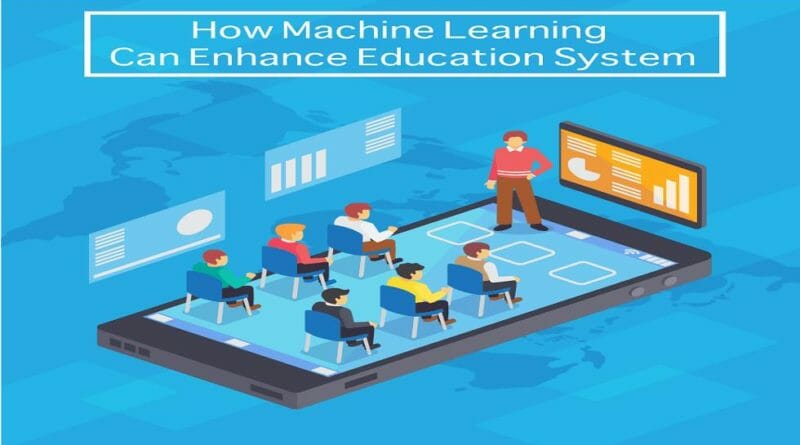Teachers and Machine Learning
Old school educators are having a hard time getting used to machines having the ability to think and learn. Suggesting to them that machine learning is going to revolutionize the education field usually falls on deaf ears. However, sooner or later, they will have to come to grips with this new reality.
Machine Learning is defined “a field of computer science that uses statistical techniques to give computer systems the ability to “learn” (i.e., progressively improve performance on a specific task) with data, without being explicitly programmed.” For example, in education, we see machine learning in learning analytics and artificial intelligence.
Ways machine learning will revolutionize the education sector.
- Increasing efficiency. Machine learning in the form of artificial intelligence has the potential to make educators more efficient by completing tasks such as classroom management, scheduling, etc. In turn, educators are free to focus on tasks that cannot be achieved by AI, and that require a human touch.
- Learning analytics. Machine learning in the form of learning analytics can help teachers gain insight into data that cannot be gleaned by using the human brain. In this capacity, computers can perform deep dives into data, sifting through millions of pieces of content, and making connections and conclusions that positively impact the teaching and learning process.
- Predicative analytics. Machine learning in the form of predictive analytics can make conclusions about things that may happen in the future. For instance, using a data set of middle school students’ cumulative records, predictive analytics can tell us which ones are more likely to drop out because of academic failure or even their predicated score on a standardized exam, such as the ACT or SAT.
- Adaptive learning. Machine learning in the form of adaptive learning can be used to remediate struggling students or challenge gifted ones. Adaptive learning is a technology-based or online educational system that analyzes a student’s performance in real time and modifies teaching methods and the curriculum based on that data. Think AI meets dedicated math tutor meets personalized engagement.
- Personalized learning. Machine learning in the form of personalized learning could be used to give each student an individualized educational experience. Personalized learning is an educational model where students guide their own learning, going at their own pace and, in some cases, making their own decisions about what to learn. Ideally, in a classroom using personalized learning, students choose what they’re interested in, and teachers fit the curriculum and standards to the students’ interests.
- Assessment. Machine learning in the form of artificial intelligence can be used to grade student assignments and exams more accurately than a human can. It may require some input from a human being, but the results will have higher validity and reliability.
Machine learning is going to revolutionize the field of education, whether we want it to or not.
There’s no denying that anything that can help to streamline the workload of educators and increase the efficiency with which they use their time is critical in education today. However, it’s important not to give too much authority to machine learning without fully understanding it.
Lack of clarity
A lot of questions still surround machine learning, such as who writes the algorithm? What does it mean? Is it actually any good? What’s it picking up on? Are there any biases that we can’t understand? Is that a good thing?
It can be quite hard to understand where machine learning comes from, so it’s important not to fully rely on these results without the all-important human touch of an educator’s input.
Unknown variables
It’s also worth noting that data may not take into account different variables within a student’s life. So, while a machine learning algorithm can analyse data from a series of maths tests, it wouldn’t take into account other variables that can have a significant impact on the data that informs those tests; something as simple as whether the student taking the test had breakfast that morning can impact their performance, for example, but an algorithm will not understand this. If data sets are being trained based on a single strand of a single variable, the risk of coming up with conclusions that don’t understand more significant variables within that student’s overall life is high.
Data
Finally, it should be remembered that machine learning feeds off data – in this case children’s data – and large amounts of it, so institutions should always prioritise data security and confidentiality.
It appears, then, that machine learning offers a number of benefits to both students and educators, saving time and reducing admin for teachers, while potentially also leading to better ongoing training, and offering regular feedback and personalized learning to students. Having said that, relying purely on machine learning data is not the way to go. Teachers know their students better than anyone and there is always the risk of unconscious bias when it comes to data. With that in mind, as in so many areas of edtech, machine learning combined with the human element looks like the way to create the best learning experience for all.

